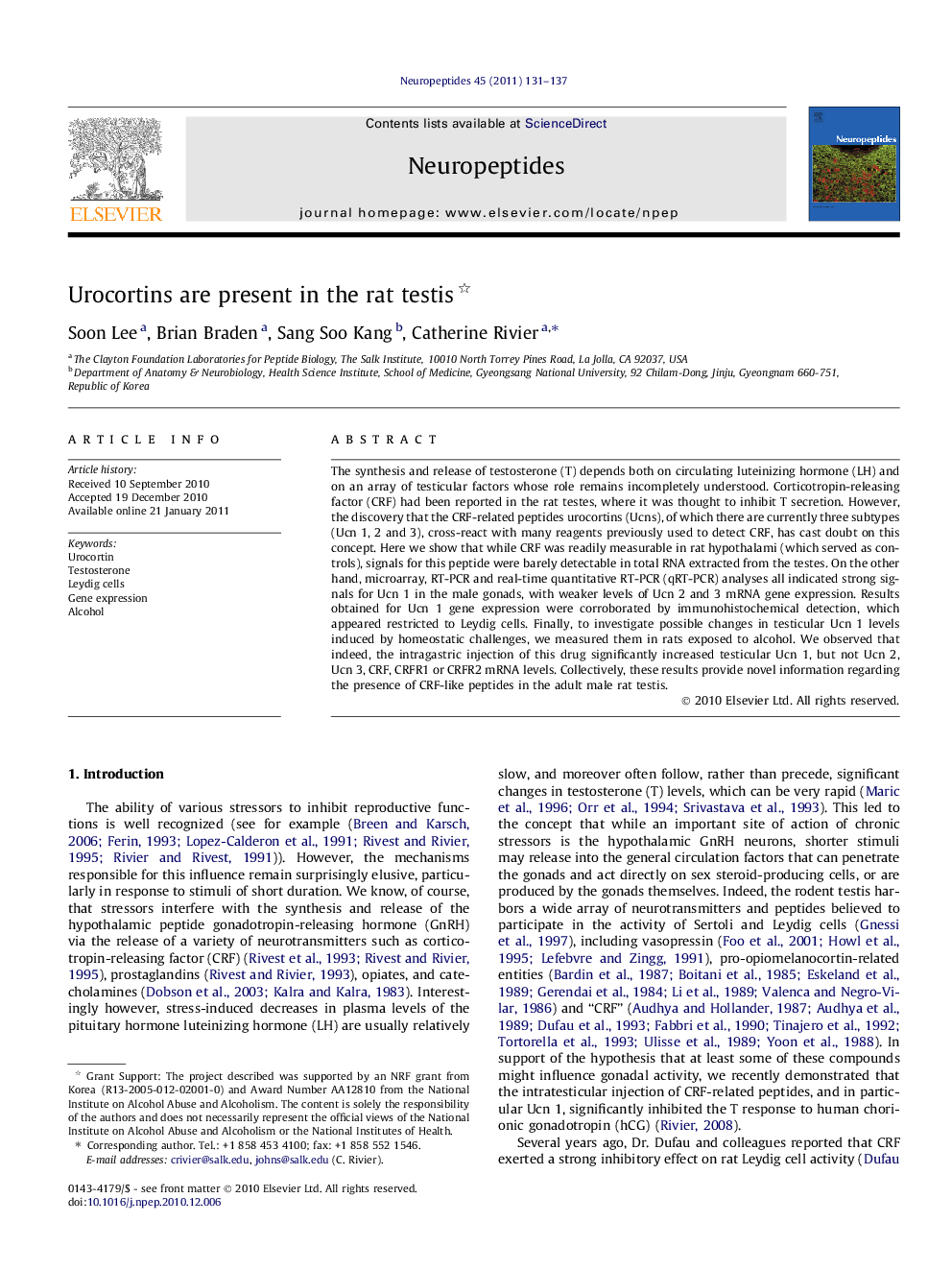| Article ID | Journal | Published Year | Pages | File Type |
|---|---|---|---|---|
| 2808142 | Neuropeptides | 2011 | 7 Pages |
The synthesis and release of testosterone (T) depends both on circulating luteinizing hormone (LH) and on an array of testicular factors whose role remains incompletely understood. Corticotropin-releasing factor (CRF) had been reported in the rat testes, where it was thought to inhibit T secretion. However, the discovery that the CRF-related peptides urocortins (Ucns), of which there are currently three subtypes (Ucn 1, 2 and 3), cross-react with many reagents previously used to detect CRF, has cast doubt on this concept. Here we show that while CRF was readily measurable in rat hypothalami (which served as controls), signals for this peptide were barely detectable in total RNA extracted from the testes. On the other hand, microarray, RT-PCR and real-time quantitative RT-PCR (qRT-PCR) analyses all indicated strong signals for Ucn 1 in the male gonads, with weaker levels of Ucn 2 and 3 mRNA gene expression. Results obtained for Ucn 1 gene expression were corroborated by immunohistochemical detection, which appeared restricted to Leydig cells. Finally, to investigate possible changes in testicular Ucn 1 levels induced by homeostatic challenges, we measured them in rats exposed to alcohol. We observed that indeed, the intragastric injection of this drug significantly increased testicular Ucn 1, but not Ucn 2, Ucn 3, CRF, CRFR1 or CRFR2 mRNA levels. Collectively, these results provide novel information regarding the presence of CRF-like peptides in the adult male rat testis.
